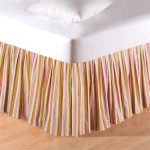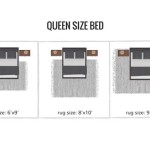Can Bed Bugs Live On Mattress Covers?
Bed bugs are small, parasitic insects that feed on human blood. They are known for their ability to infest mattresses and other bedding, making them a common household pest. A question that often arises is whether bed bugs can live on mattress covers. The answer is not simple and depends on the material of the mattress cover and the extent of the infestation.
Why Cover Material Matters
The material of a mattress cover plays a crucial role in determining whether bed bugs can survive on it. Bed bugs are attracted to rough surfaces and crevices where they can hide. Materials like cotton and linen offer more potential hiding places for bed bugs than smooth, synthetic fabrics.
While a cotton or linen cover may provide an initial temporary haven for bed bugs, they are ultimately not ideal for long-term survival. These materials are porous, allowing for easier penetration by pesticides and heat treatments, making them more vulnerable to extermination efforts.
The Role of Mattress Cover Tightness
Even if a mattress cover is made of a material that bed bugs can access, the tightness of the cover is an important factor. Bed bugs are notorious for their ability to squeeze into small spaces. A loose or poorly fitting mattress cover offers more opportunities for bed bugs to hide. A tightly fitted cover, especially one with a zipper closure, can significantly reduce the chances of bed bugs finding a haven.
However, a tightly fitted cover doesn't guarantee complete protection. Bed bugs can still potentially reach the mattress through seams, zippers, or even small tears or holes in the cover.
The Importance of Regular Inspections and Cleaning
Regardless of the material or fit of the mattress cover, regular inspections and cleaning are vital in preventing bed bugs from establishing a long-term presence.
A thorough inspection of the mattress cover, including the seams and edges, should be performed regularly. This includes looking for signs of bed bugs such as live insects, shed skins, or tiny brown or black fecal dots.
The mattress cover should also be washed regularly in hot water (at least 120°F) and dried on high heat. This combination of heat and detergent effectively kills most bed bugs and their eggs.
While mattress covers can play a role in bed bug control, they should not be considered a sole means of prevention. A comprehensive approach is necessary, including regular inspection, professional pest control if an infestation is detected, and maintaining a clean and clutter-free environment.

Can You Still Get Bed Bugs With A Mattress Cover

Bed Bugs Do Mattress Encasements Help Pest Management Professional

Do Bed Bug Covers Work Integrity Solutions

Can Bed Bugs Live In Mattresses Bug Treatment Orkin

The Best Mattress Covers For Bed Bug Protection

Do Mattress Protectors Prevent Bed Bugs Yes No Here S Why Ecoy

Do Bed Bugs Live In Mattresses

Places Bed Bugs Can Hide In Your Home Mother Nature S Pest Lawn

Where Do Bed Bugs Live How To Find Their Hiding Spot Terminix

Early Signs Of Bed Bugs 5 Red Flags To Look For Naplab







